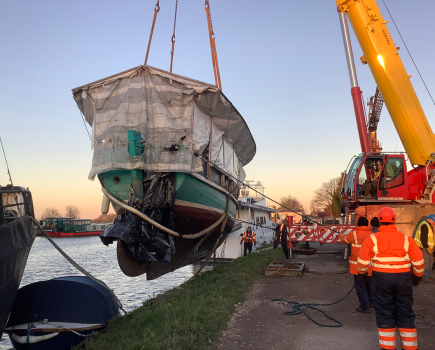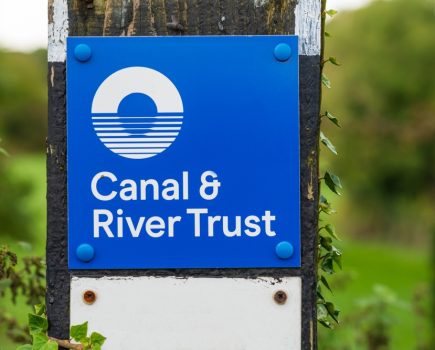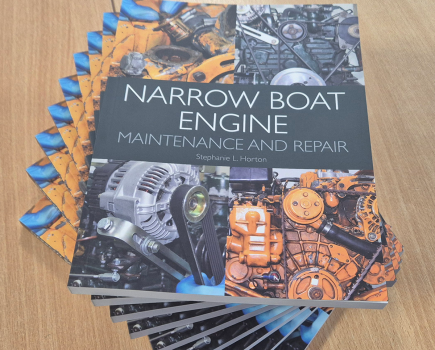The London Mooring Strategy aims to tackle the shortage of space for the burgeoning floating population to tie up – but first, the Canal & River Trust needed to establish who these boaters are

The typical London boater is a liveaboard, living alone or with a partner, in full-time employment, has lived afloat for a couple of years, is attracted to the waterway environment, community and alternative lifestyle (but also by its affordability, to a lesser extent) and feels the biggest issue is the shortage of mooring space in the capital.
These are among the main findings of a major survey by the Canal & River Trust into ‘Who’s on London’s boats’.
With more and more boaters choosing to make their home on London’s waterways, many with no home mooring, the Regent’s Canal, lower Lee Navigation and Paddington Arm have become increasingly busy.
While this isn’t necessarily a bad thing – as CRT says, “places which were once quiet with few boats, are now busy and active places” – the sheer numbers have put pressure on mooring space.
Total boat numbers have risen from 2,164 in 2010 to 4,820 in 2016 – with 390 more boats without home moorings arriving in the last year alone.
Double- and triple-mooring have become common, putting off visiting boaters who fear they will nowhere to tie up. The CRT has launched a pilot of pre-bookable visitor berths as part of the London Mooring Strategy to make the best use of available resources, beginning with the survey.

Survey results
Of the 1,323 responses received (representing roughly equal numbers of continuous cruisers and craft with home moorings), 69% are living afloat, with 58% using their boat as their primary home.
Perhaps surprisingly, considering concerns expressed about boaters renting liveaboard craft, less than 0.5% of respondents reported that they were renting privately, with outright ownership the most common at 75%; 11% under a mortgage or loan; and nine percent in shared ownership.
As one might expect from the rapid rise in numbers, half of them have been afloat for no more than three years – but most have no plans to move back onto the land.
However, in contrast to the stereotypical view that London boaters have chosen the life primarily because if its affordability compared to bricks and mortar, 81% rated the ‘waterway environment’ as a main motivation, followed by ‘sustainable low-impact living’ (54%) and ‘the waterway community’ (53%). ‘Affordability’ was in fifth place, at 49%.
They are very clear on the main improvement needed: although water and sewerage facilities get a mention, as does dredging, it’s more mooring space and mooring rings scoring highest.
As regards how to tackle this shortfall, the survey asked whether boaters would pay for a permanent mooring if more were available. Almost half expressed at least ‘some interest’ in taking up a permanent mooring if they were more readily available, and given that 28% already have such moorings, that left just 27% declaring ‘absolutely no interest’ in a fixed berth.
Of the potential mooring types, most would favour fully-serviced offside or small basin mooring rather than a marina. Making such berths sufficiently affordable might be a challenge, given that when asked which of a number of price bands would be their maximum, most opted for the bottom two (£128-£199 and £200-£299 per metre per year).
When it came to other factors besides price, 81% saw ‘somewhere I personally feel safe’ as very important; nearby services came a close second (79%), followed by public transport (63%). Health services (16%) and schools (8%) by contrast were seen as relatively unimportant.
The Trust has begun identifying possible sites for permanent moorings. Detailed proposals are being developed for a number of locations across the London area:
– Slough Arm
– Nestle site at Hayes
– Southall Gasworks site
– Old Oak / Park Royal
– Little Venice / Paddington Basin
– Docklands
– Limehouse Cut
– Lee Valley / Meridian Water.
A draft strategy is promised in April, with a consultation running until June, and six months for review and further development before the final strategy is published in December 2017.
____________________
You may also like:
Boaters can pay to pre-book selected moorings in London
Residential Boat Owners’ Association warns on residential hires
Boat licence fees 2017 to rise
Image(s) provided by:
Martin Ludgate







